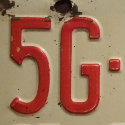
There's a familiar look to a new 5G international ranking table on average downlink speeds compiled by research firm Opensignal as part of its new report: "The State of Mobile Network Experience 2020: One Year Into the 5G Era."
In much the same way that Southeast Asia and some Scandinavian countries tend to occupy the top spots when it comes to FTTH subscriber penetration, so it is the case with the 20 countries surveyed by Opensignal – which have launched 5G – when it comes to average downlink speeds (which takes into account 4G).
Using measurements taken from "millions of smartphones worldwide" in the first three months of this year, South Korea and Japan occupy the top two positions with average downlink speeds of 59 Mbit/s and 49.3 Mbit/s, respectively. Mobile users in Norway, Australia and Switzerland, where 5G is also available, also enjoy average downlink throughput in excess of 40 Mbit/s.
Kuwait languishes in last position (16.9 Mbit/s) in the ranking of countries to have launched 5G, while the UK and Germany – which don't fare well in FTTH league tables – have still got a bit of catching up to do.
With average downlink speeds of 22.9 Mbit/s (UK) and 28.7 Mbit/s (Germany), consumers in two of Europe's biggest economies are typically getting 50% slower throughput than people in South Korea and Japan. The US sits between Germany and the UK (26.7 Mbit/s).
Canada, which has recently launched 5G – and doesn't feature in Opensignal's 20-country ranking – edges South Korea on average downlink speeds (59.6 Mbit/s).
Not all about speed
While there's a relationship between download speeds and quality of the video experience, the strength of this correlation – observes Opensignal – declines as speeds increase. Picture quality, video loading time and stall-rate are also part of the perceived video experience.
Using a point scale between zero and 100 to measure video experience, with 75 or above counting as "excellent" and 65-75 as "very good," the pack of 5G countries measured by Opensignal gets shuffled around a bit. South Korea lands in the "very good" category, while seven other countries are deemed "excellent." Norway comes out on top here with a score of 78.6.
Opensignal emphasizes that 4G continues to be important in the "5G era," not least because the first version of 5G New Radio – non-standalone access – requires 5G smartphones to connect to an LTE "anchor" network.
Encouragingly for Germany and the UK, they are not too far off the video experience pace, falling into the "very good" bracket with scores of 74 and 71.7 respectively. That said, 12 other European countries have already achieved "excellent" status.
The US, on the other hand, ranks last among G7 countries on video experience. With a score of 56, the US scrapes into the "good" category.
The Czech Republic (79.1) and the Netherlands (78.8), which don't feature on Opensignal's 5G ranking table, are the top two countries for video experience when measured against all other countries that have either 4G or 5G availability (more than 100).
To underline the point that speed is not king when it comes to video experience, the Netherlands clocks average speeds of 54.8 Mbit/s, but it's a much slower 32.7 Mbit/s in the Czech Republic.
— Ken Wieland, contributing editor, special to Light Reading
About the Author(s)
You May Also Like











